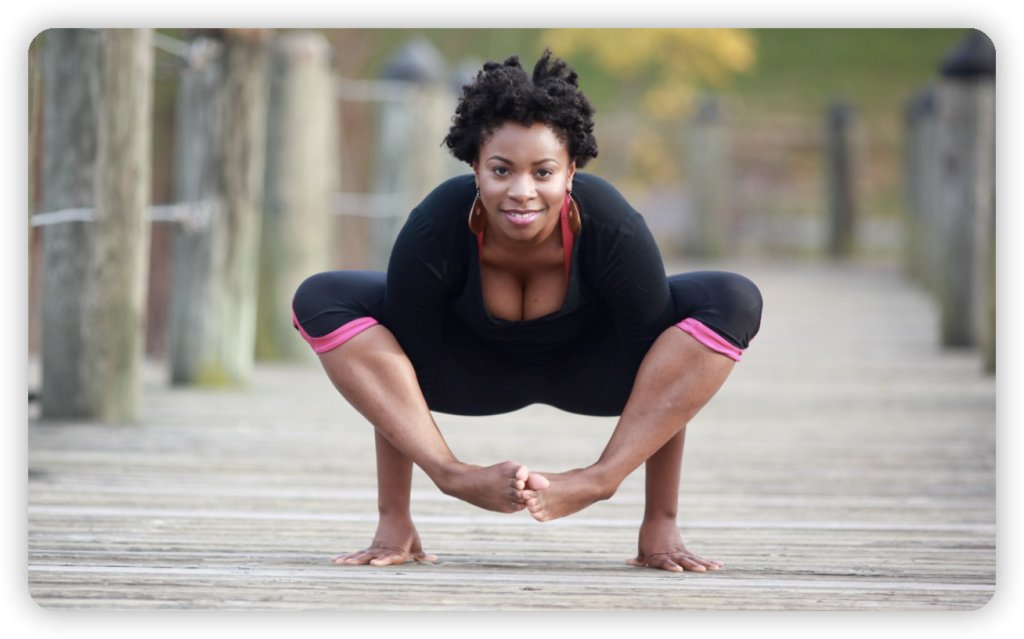
Bhujapidasana, often referred to as the Shoulder Press Pose, is an advanced arm balance posture. This asana requires significant strength in the arms, shoulders, and core, as well as flexibility in the hips and legs.
Here’s a concise step-by-step guide for the Shoulder Press Pose:
- Starting Position: Begin in a squat with feet slightly wider than shoulder-width apart. Lean your torso forward between your knees.
- Raise Hips: Lift your hips, so your thighs are nearly parallel to the floor.
- Position Arms: Place your shoulders and upper arms inside your legs, letting your upper arms rest on your thighs just above the knees.
- Place Hands: Set your left hand on the mat inside your left foot, fingers pointing forward. Repeat with your right hand. There will be a natural arch in the upper back during this process.
- Shift Weight: Press your palms firmly into the mat and start to shift your weight from your feet to your hands, gradually straightening your arms. This motion will lift your feet off the ground.
- Engage Arms and Thighs: Press your outer arms and inner thighs together. If possible, cross your ankles in front of you.
- Hold: Keep your gaze forward and hold the position for up to 30 seconds.
- Release: To exit the pose, bend your elbows, exhale, and gently lower your feet back to the ground. Return to your initial squat position and take a few deep breaths to relax.
Benefits:
- Strengthens the arms, wrists, and core.
- Tones the belly.
- Enhances sense of balance.
- Stimulates abdominal organs, aiding in digestion and alleviating constipation.
Cautions:
- Avoid this pose if you have injuries to the elbow, wrist, shoulder, or lower back.
- Due to its advanced nature, be sure to approach this pose with caution and ensure proper alignment.
For those new to this pose or working through injuries, guidance from a certified yoga instructor is invaluable. They can provide modifications, proper techniques, and adjustments to ensure a safe and effective practice.

